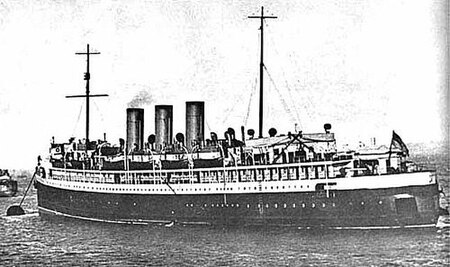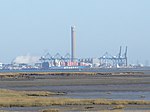HMS Princess Irene
1914 ships1915 disasters in the United Kingdom1915 in EnglandAuxiliary ships of CanadaBorough of Swale ... and 10 more
Maritime disasters in KentMaritime incidents in 1915Minelayers of the Royal NavyShips built on the River ClydeShips sunk by non-combat internal explosionsSteamships of CanadaSteamships of the United KingdomUse British English from January 2017World War I merchant ships of CanadaWorld War I shipwrecks in the North Sea

HMS Princess Irene was a 5,394 GRT ocean liner which was built in 1914 by William Denny and Brothers Ltd, Dumbarton, Scotland for the Canadian Pacific Railway. She was requisitioned by the Royal Navy on completion and converted to an auxiliary minelayer. On 27 May 1915, she exploded and sank off Sheerness, Kent, while being loaded with mines prior to a deployment mission, with the loss of 352 lives.
Excerpt from the Wikipedia article HMS Princess Irene (License: CC BY-SA 3.0, Authors, Images).HMS Princess Irene
Port Victoria Road,
Geographical coordinates (GPS) Address Nearby Places Show on map
Geographical coordinates (GPS)
| Latitude | Longitude |
|---|---|
| N 51.429722222222 ° | E 0.69361111111111 ° |
Address
Jetty 6
Port Victoria Road
ME3 0AR , Isle of Grain
England, United Kingdom
Open on Google Maps









